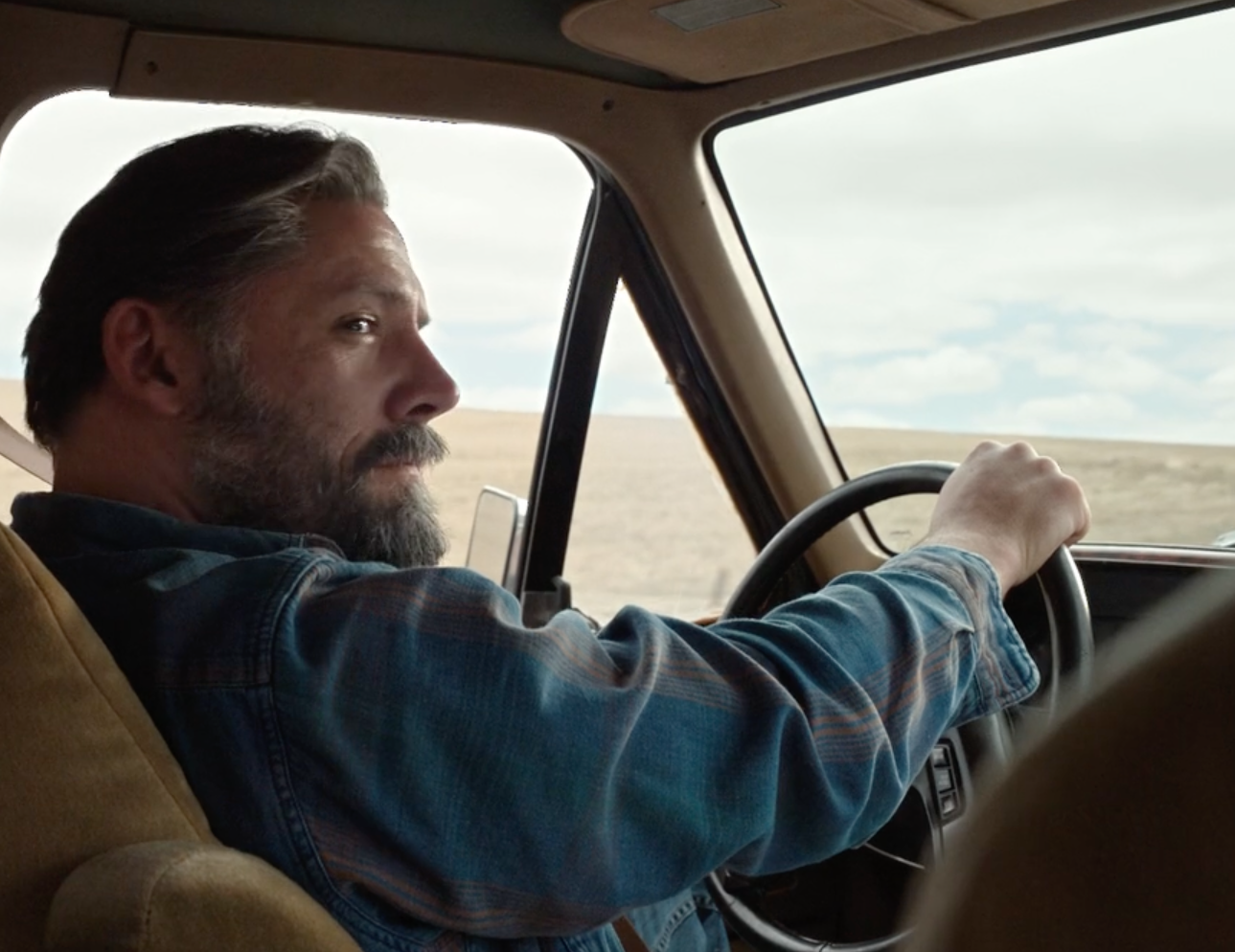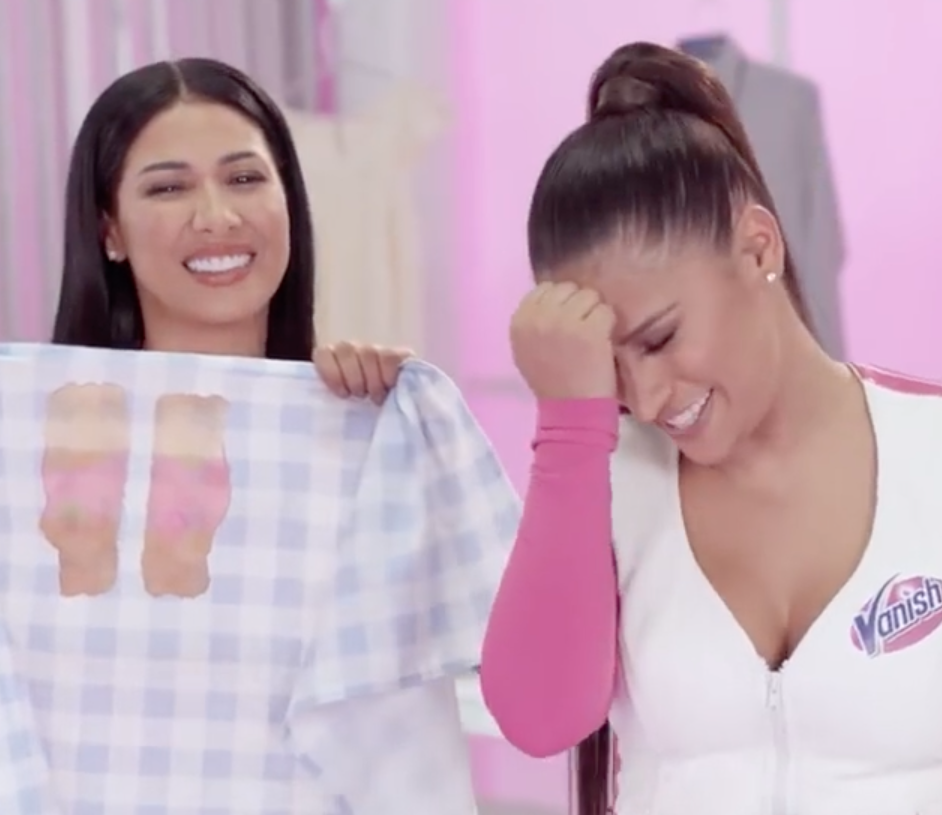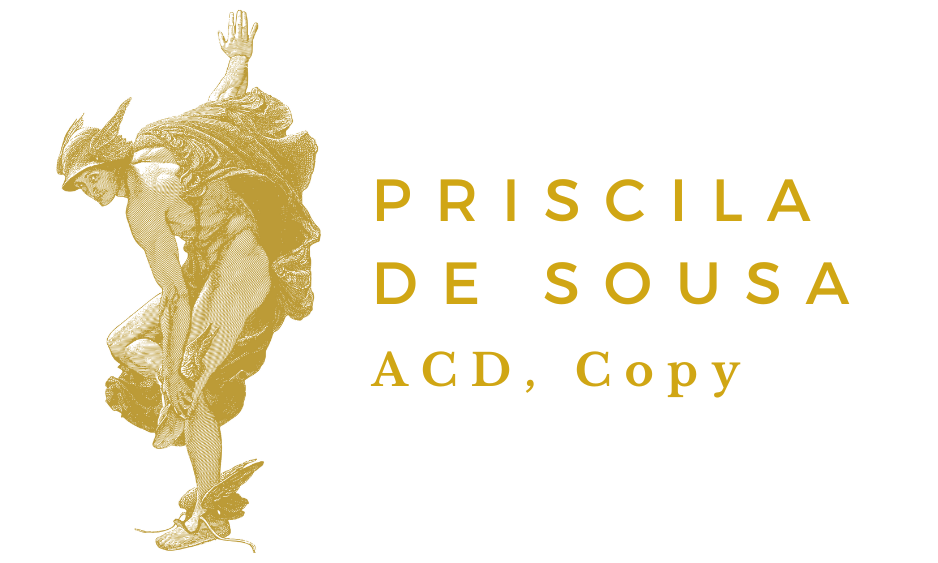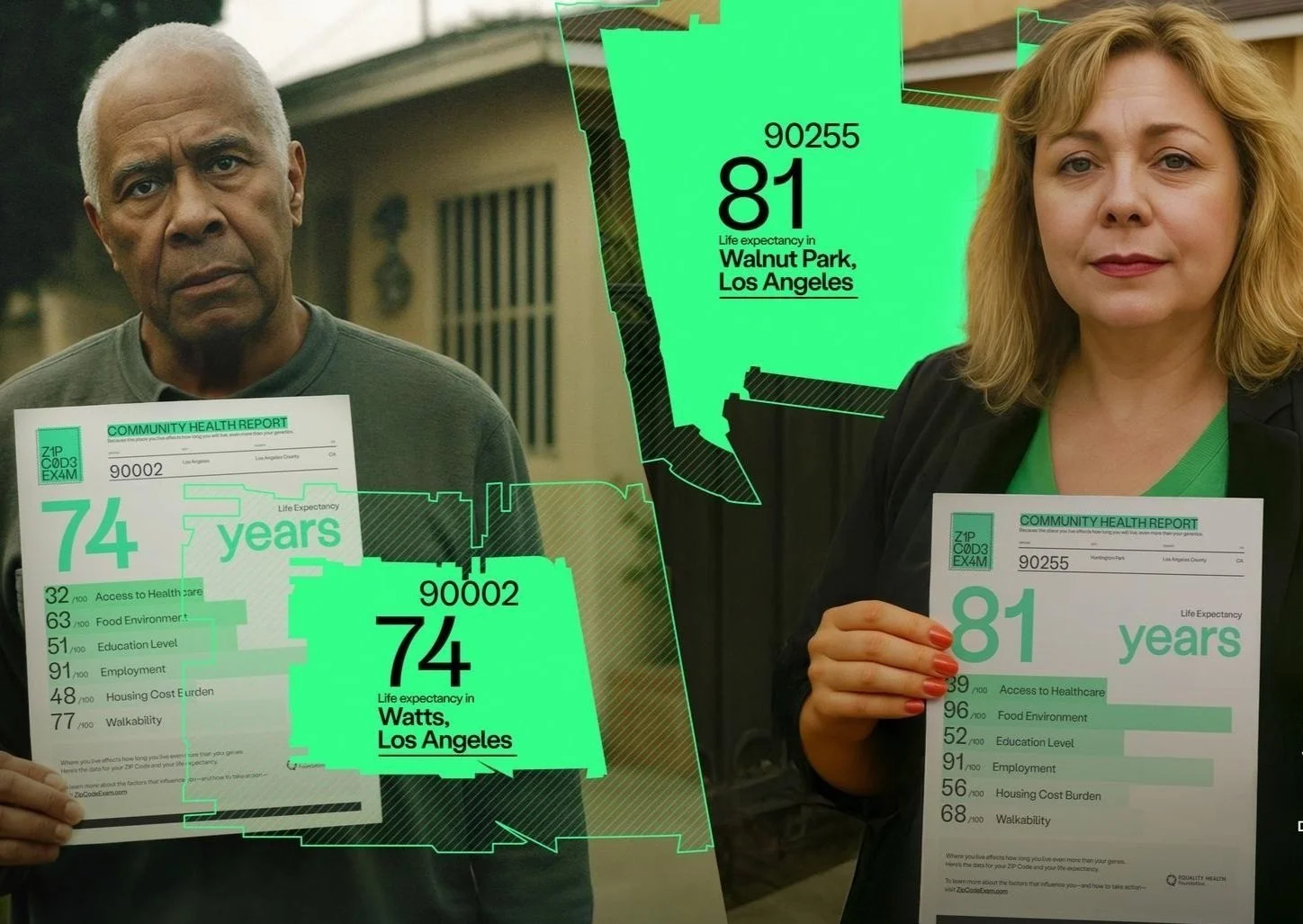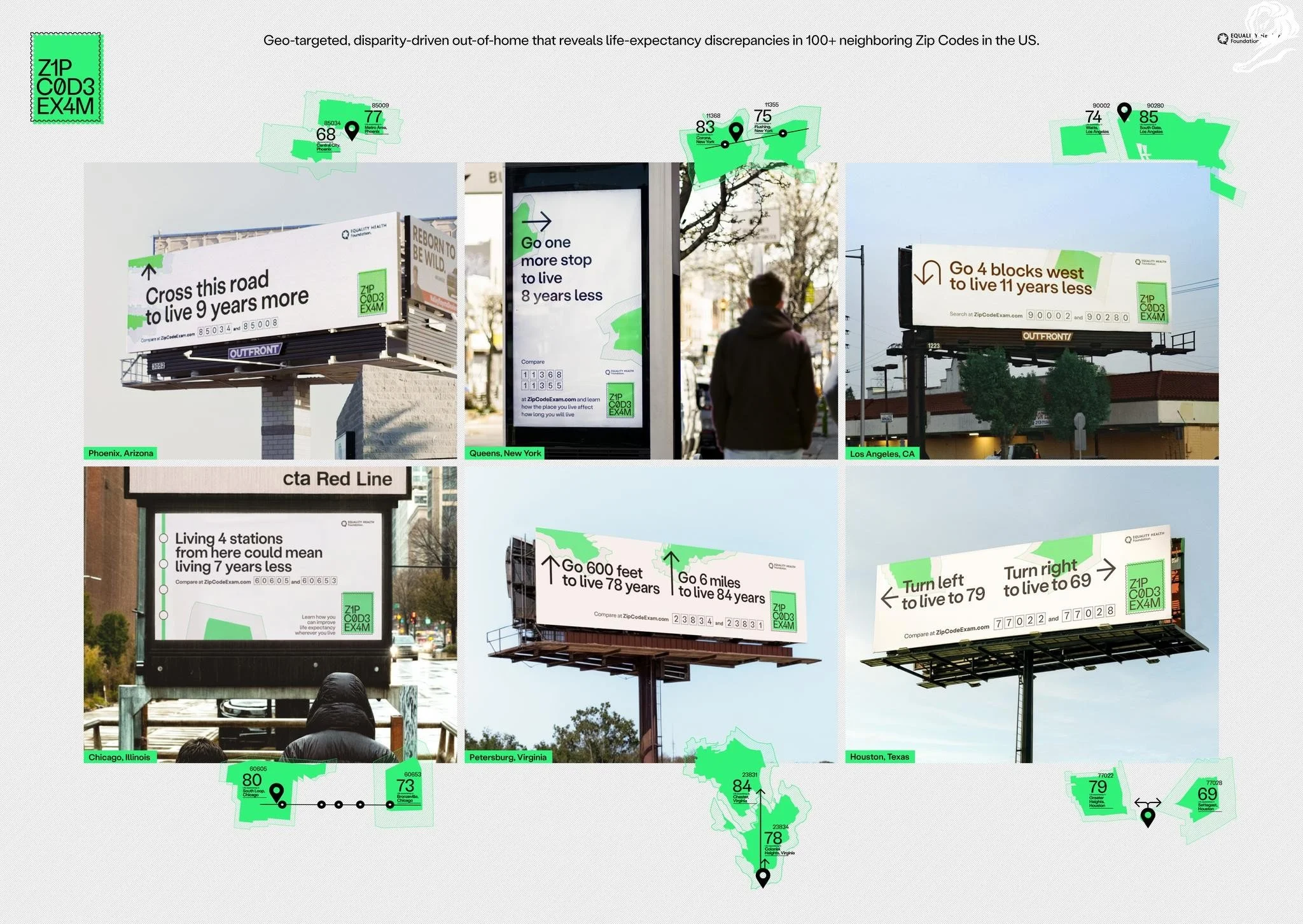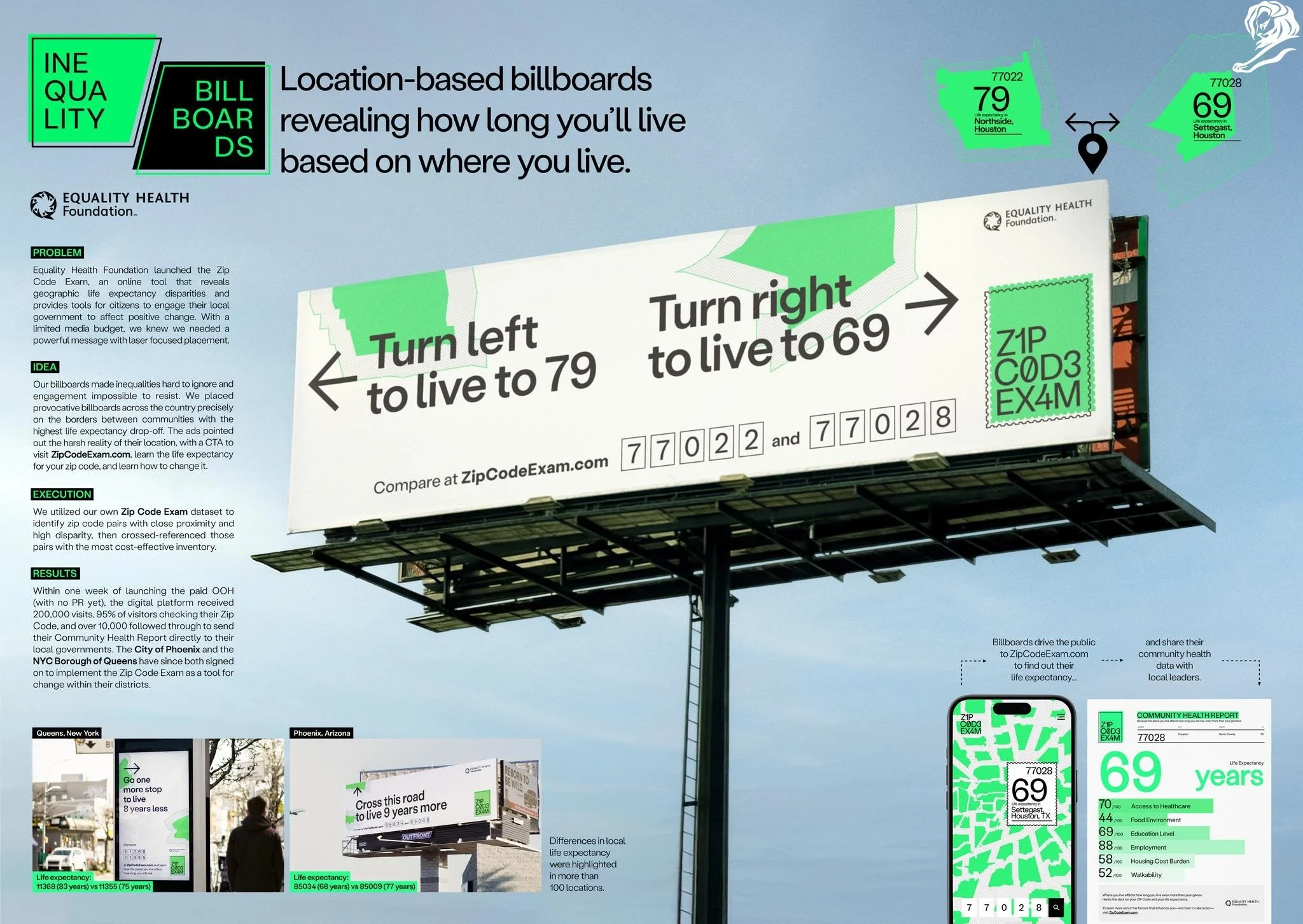Cannes Lions International Festival of Creativity
Health & Wellness - Creative Data - Gold
Health & Wellness - Integrated - Silver
PR - Research, Data & Analytics - Bronze
Direct - Not-for-Profit / Charity / Government - Shortlist
Direct - Use of Print/Outdoor - Shortlist
Health & Wellness - Direct - Shortlist
Creative Data Collection & Research - Shortlist
Creative Data - Single-Market Campaign - Shortlist
Creative Data - Data-Driven Targeting - Shortlist
LIA
Health & Wellness - Craft - UI - User Interface & Navigation - Gold
Creativity in Media - Use of Outdoor - Silver
Design - Creative Use of Data - Silver
Design - Data Visualization - Silver
Health & Wellness - Creative Use of Data - Silver
Health & Wellness - Public Service/Charity/NGO - Silver
Creative Use of Data Campaign - Billboard - Bronze
Creative Use of Data - Data Visualization - Bronze
Creativity In PR - Public and Political Affairs - Bronze
Creativity In PR - Public Service/Charity/NGO - Shortlist
Creative Use of Data - Data Collection and Research - Shortlist
Creativity in Media - Non-profit - Shortlist
Ad Age Marketing Impact Awards
Integrated Campaign of the Year - Gold
Advocacy - Bronze
Best in Show
The Drum Awards
Design use of data & insight - Gold
Charity or Not-for-Profit & Government or Public Sector - Silver
Best website experience - Silver
Social Purpose: Use of Data & Insights - Silver
Media OOH - Silver
Digital for Good - Silver
Social Purpose: Integrated Campaign - Not For Profit - Bronze
Use of Data & Insights - Bronze
Social Purposes - BIG Thinking - Bronze
Social Purpose: Charity or Not for Profit - Shortlist
Use of location - Shortlist
In America, the most critical health indicator might be your home address. In cities across the country, it’s common to find neighboring zip codes — separated by a single street or rail line — with life expectancy gaps of up to 14 years. These disparities aren’t the result of genetics or lifestyle choices, but of systemic inequality: food deserts, housing burden, transit gaps, limited education and job access, and inadequate healthcare.
Equality Health Foundation has spent years working within underserved communities across America, like South Phoenix, to close these gaps — not with prescriptions, but with partnerships. With the safety nets unraveling and public trust eroding, there was an urgent need to reignite awareness and accountability around health inequity.
Enter The Zip Code Exam — a provocative new health assessment that doesn’t start with a stethoscope but with your address. By spotlighting the geography of health, the campaign helped individuals and institutions understand the invisible forces shaping community wellness.
It wasn’t just about showing the data — it was about making people feel it. Whether passing a billboard that says, “Go left and live to 69. Go right and live to 82,” or comparing your zip code to the one across the tracks, the message was always visceral: the system is broken. But change begins when we see it clearly.
Idea
The Zip Code Exam reimagines what a health exam can be — using public data instead of a stethoscope. It transforms a confronting truth — that your address can predict your lifespan — into a powerful, personalized experience.
Rather than relying on traditional media or clinical tools, the campaign broke category boundaries by turning billboards into diagnostic prompts and zip codes into calls for action. Hyperlocal out-of-home placements used real life expectancy data to provoke emotion and reflection at the neighborhood level.
This wasn’t just surprising, it was unforgettable. Headlines like “Cross this street, lose 10 years” made invisible inequalities visible, sparking conversation online and offline.
By connecting data, storytelling, geography, and digital tools, the campaign transcended its original challenge, not just raising awareness of health disparities, but empowering users to explore, understand, and address them. It made systemic injustice feel urgent, local, and fixable, one zip at a time.
Strategy
Most Americans believe their health outcomes are based on genetics and personal choices. But a deeper truth lies beneath: your zip code can be a better predictor of your life expectancy than your DNA. Our strategy: confront that cultural blind spot in a way that’s impossible to ignore.
We collected and analyzed over 900,000 data points from 30,000 U.S. zip codes, identifying life expectancy disparities between adjacent neighborhoods. Then we showed them — literally — on an interactive map of all US zip codes.
We placed out-of-home installations on the borders of disparity, using pointed headlines like “Cross this street, lose 10 years.” These acted as billboards and wake-up calls. Each ad directed viewers to zipcodeexam.com, where they could explore their local health score, and share it with their local leaders.
The goal wasn’t just awareness. It was agency— equipping communities to demand better, with data in their hands.
Description
The Zip Code Exam is a digital tool that reveals how where you live can predict how long you’ll live — sometimes more than your DNA. Our goal: make this invisible truth visible and urgent.
We analyzed over 900,000 public data points from 30,000 U.S. zip codes, linking life expectancy to Social Determinants of Health (SDOH) like access to care, housing, food, and employment. Then we built a platform that transformed this data into easy-to-understand “Health Factor Scores”—all presented in a Community Health Report for each zip code.
Users are able to download their report or send their community health report directly to their town and county elected official, via an API integration of public available email data.
By turning systemic inequity into a personal wake-up call, the Zip Code Exam reframed public health — and gave communities data they could act on.
Execution
The campaign launched in six U.S. cities with the starkest health disparities: New York, Phoenix, Los Angeles, Houston, Petersburg, and Chicago, with a data-driven, hyper-targeted OOH campaign called Inequality Billboards, placing provocative billboards on zip code borders where life expectancy dropped dramatically. For example: “Get off at this stop, live to 70. Stay on until the next, live to 84.” The effect was startling. It made people stop, reflect, and visit the platform.
At zipcodeexam.com, users entered their Zip Code and received a personalized life expectancy score and social determinants breakdown. The site compared Zip Codes side-by-side, contextualized disparities, and offered next steps for action, including civic engagement, and community health resources. Users could also download their Community Health Report and share it with their local leaders.
This physical-to-digital loop grounded a systemic issue in deeply personal terms — and opened a path forward.
Outcome
The campaign launched in April 2025, and within one week, zipcodeexam.com received traffic from every region where OOH placements were live, totaling 200,000 visits, with over 10,000 Community Health Reports sent to local leaders. The average time spent on site exceeded 3 minutes, users weren’t just visiting, they were exploring.
Billboards were photographed and shared across social platforms, sparking organic, hyperlocal conversation. Many users posted side-by-side comparisons of their zip code vs. neighboring areas, turning private data into public dialogue.
Most notably, the City of Phoenix and the Borough of Queens in New York City have both signed on to implement the Zip Code Exam as a standard part of their annual budgeting process.
While still early in its rollout, the campaign has already shifted the conversation from “Why aren’t people healthier?” to “Why do our systems make health harder?” That mindset shift is where true public health progress begins.


